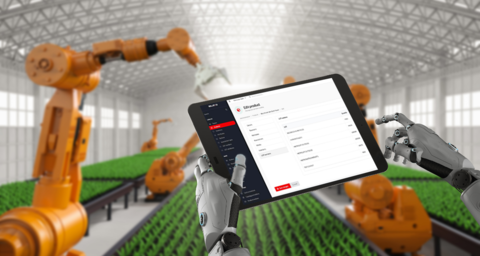As businesses strive to stay ahead of the competition, they are now turning to automation technologies to help them remain competitive. In 2023, it will become even more prominent as businesses leverage decision-automation, smart algorithms, AI, and machine learning to streamline processes. From customer service chatbots to automated supply chain optimization, and financial adjudication, business automation is evolving rapidly and new trends are emerging that will shape the future of business operations.
In recent years, the use of automation technologies has increased exponentially in businesses of all kinds. This trend is expected to continue, with many CEOs planning to increase their technology investments in digital capabilities. According to a survey by the Business Performance Institute (BPI), 85% of CEOs intend to do just that over the next three years.
The introduction of automation has had profound effects on the way businesses operate, with many of its features allowing for more efficient and effective operations. One area in which automation can really have a positive impact is revenue-driving activities. Revenue-driving automation involves automating processes throughout the customer lifecycle, from initial contact to sales, to operations, management, customer service, and fulfillment.
At the same time, the primary goal of initiatives is not as a means to replace humans - though clearly that can be a side effect - but to be used as an augmentation for human performance. Automation is becoming increasingly powerful, allowing businesses to streamline processes, increase efficiency, and reduce costs. Additionally, it can help improve decision-making by providing data-driven insights that would be difficult or impossible to generate as quickly and thoroughly by humans alone. In the recent past, businesses have tried to mitigate labour scale issues by hiring more and more staff. Really, this amounts to putting virtual lipstick on a digital pig -- this isn't actually solving anything.
Strictly speaking, that is referred to as Augmentation. Where processes are not completing a task thereby replacing a human, but supporting human decision-making with automatically-generated insights, notifications, and critical data; often with follow-up automated calls-to-action the human can call upon once a human decision is reached.
Industries across a wide spectrum have expanded their use of business automation and augmentation increasingly, having the potential to revolutionize how businesses operate.
In the retail sector, for instance, automated systems are being used to process customer orders and manage inventory levels with greater accuracy and timing. Have you ever ordered something online only to find out later it was never actually in stock? Proper automation solves that very annoying bad customer experience and is increasingly being used to power supply chains and ecommerce, significantly improving efficiency and cutting costs. Automated supply chain management systems make it easier for businesses to keep track of inventory levels, orders, shipments, and other data quickly and accurately. This can lead to improved customer service and a reduction in the amount of time taken to fulfill.
Really, this amounts to putting virtual lipstick on a digital pig -- it isn't actually solving anything.
In the current business landscape, automation can be a key tool for organizations looking to address talent shortages. Automation allows companies to fill in where talent is scarce, allowing them to quickly and easily expand their workforce without having to invest in expensive recruitment and training while also allowing companies to keep their talented employees engaged and working on important tasks instead.
Another trend that is expected to shape the landscape of business automation is Natural Language Processing (NLP) technology. NLP allows computers to understand language better, enabling them to interpret natural human language commands such as spoken or written text. By utilizing this technology, businesses will be able to create intelligent virtual assistants capable of providing personalized customer service experiences that are tailored according to the needs of their users.
Natural language smart search is an advanced form of information retrieval technology which utilizes natural language processing (NLP) algorithms in order to understand and respond to queries posed by a user. It is designed to make it easier for people to search for and find the content that they are looking for, without needing to understand the technical details of how the search. This can be as simple as understanding when a customer has entered a misspelled query and returning the correctly interpreted results. Or can be far deeper by interpreting associated customer motivation behind their search and returning tangential results as well.
Intelligent document processing (IDP) and optical character recognition (OCR) are two tools that can be used to automate processes within a business. IDP is a technology that uses natural language processing algorithms to read, classify, analyze, and extract relevant information from documents. It facilitates automated document-related tasks such as validation, data entry, and interpretation. But its most fascinating and least discussed benefit is computer-physical media interface: replacing physical human interpretation of a piece of paper (or PDF, jpg, etc).
Computer-physical media interface document scanning is a type of automated technology that utilizes Artificial Intelligence (AI) algorithms to read and interpret a physical document. This technology allows for digital documents and physical documents to be scanned simultaneously, creating a single unified document that can be accessed from multiple devices, screens, and integrated ecosystem platforms. Document scanning enables users to streamline their workflow by eliminating the human time required, and the all-too-frequent human errors that come from grunt-work repetition.
24/7 operation is one of the many powerful side effects of business automation. It enables businesses to continue processes and operations without interruption, sometimes leveraging the power of Artificial Intelligence (AI) or Smart Algorithms to identify patterns, analyze data, and recognize customer needs in real-time. This allows businesses to quickly respond to customer requests and provide the best possible experience whether a human is making the decision or not. Congratulations, your business is now a 24/7 operation!
In the financial sector, Know Your Customer, or KYC is a critical part of the onboarding process. Know Your Customer (KYC) is a process used by financial institutions to verify the identity of customers before they can access services and products. The KYC process helps protect businesses from financial crimes such as money laundering, terrorist financing, and fraud.
Financial institutions are required by law to perform KYC checks when onboarding new customers. The KYC process helps these organizations verify the identity of customers before they can access services and products. Now we can see where our automation tools come together and shine. Pair together IDP with Automation validation with 24/7 operation, and your KYC starts to look a lot more powerful, and a lot more scaleable.
85% of CEOs intend to increase their technology investments in digital capabilities over the next three years
Finally, advanced analytics solutions like predictive analytics will continue to play an important role in helping businesses make smarter decisions based on past data sets. This technology has been used by organizations across various sectors such as finance, retail and healthcare for forecasting market trends and understanding customer behaviour better so that they can optimize marketing efforts accordingly.
Looking into 2023, there’s no doubt that these emerging trends in business automation will have a major impact on how companies operate moving forward. By embracing these new tools, organizations can achieve greater efficiency while ensuring consistency across all operations — ultimately allowing them room for growth as they remain competitive within their respective markets.




























